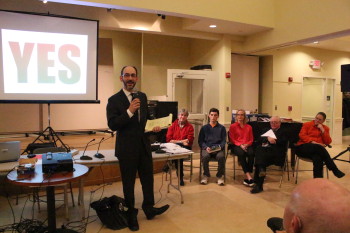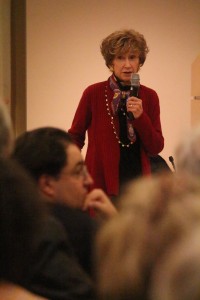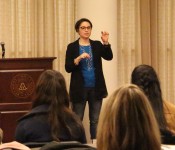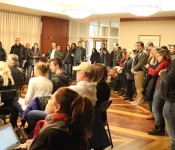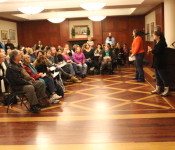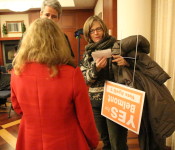Photo: Harris Field in Belmont.
The good news is that Belmont has a wealth of recreation play areas and locations. With soon two pools, a hockey rink, a large field house, a Turf surface at Harris Field, parks, ballfields, soccer pitches and 22 tennis courts, Belmont has more town-owned playing spaces than any of its neighboring communities.
The bad news is that Belmont lags far behind those same nearby communities in bringing in the bucks for the privilege of using town spaces. While revenue from Belmont’s recreation facilities brought in $792,000 in fiscal 2013, next door Arlington pulled in $1.5 million during the same time frame despite not having an indoor pool (it does have pond swimming) with camps and other groups lining up to use their facilities.
With Belmont facing limited avenues to increase overall revenue for the near future, the time has come for Belmont’s recreation areas to follow the lead of other communities and begin using its resources to pay for themselves today and in the future, according to a report from the Financial Task Force issued at the Task Force’s meeting in Town Hall on Monday, May 11.
“Now is the time for the town to change the ways we’ve done things,” said Task Force member Anne Helgen who authored the report with suggested a series of recommendations for town officials to consider.
In her report, Helgen said while Belmont’s management of the recreational assets “ad hoc … ragged and never written down,” surrounding towns have used their resources to generate greater money through broader programming, using facilities throughout the year and all day and rent them out at a considerably higher rate.
Due to the lack of any official policy, agreements and contracts were written with groups and teams “that were not made in [the town’s] interest so private groups benefited at our expense,” said Helgen.
In addition, while most surrounding municipalities promote recreation activities year round, Belmont generates 60 cents of every dollar it takes in annual from one season, the summer.
“It’s astonishing how much [other towns] offer,” said Helgen.
By analyzing the way other communities have set up their recreation programs, Belmont can begin turning around its underutilized assets by following their lead, said Helgen. They include:
- Expand programing at recreation sites, such as introducing Cross-Fit, alternative sports including flag football and Ultimate Frisbee and other enrichment events like chess, Legos and art programs.
- Target underserved market such as pre-kindergarten and toddlers with active programs as well as the stay-at-home population and seniors.
- Expand the hours the facilities are open. Summers, weekdays and many hours over the weekend “Harris Field is empty,” said Helgen, while the pools could attract more campers and programs if the pools’ times were managed more closely.
- Outsource programing such as using fitness firms to supply the demand for outdoor exercising.
- And take advantage of the high demand in the greater Boston area for pools and turf fields to charge market rate to non-residential users. Watertown rents out nearby Victory Field for $130,000 a year to groups from Boston University and Boston College during its off-peak hours.
But “jacking up the fees” will not come at the expense of Belmont youth sports or people who live in town, said Helgen.
“No, we are not proposing to put these fees on youth leagues in town. That’s not the purpose at all,” she reiterated.
Those most effected by the increase in rents will be current and future non-resident users, such as camps and sports teams which the majority of participants are not Belmont residents.
To bring these suggestions to fruition, Helgen advises Belmont to hire at approximately $100,000 a year a veteran full-time recreation director – a position not filled in the past three years as a cost savings measure – to management and lead the turnaround. The new director will be assisted by a Field Management Committee (which is currently employed in Wayland, Wellesley, Winchester and Burlington) made up of residents, the schools, sports programs and other stakeholders whose job will be to balance the needs of all users.
The town should consolidate the school and town assets under a single consolidated management – including the aquatics facilities – in addition to inventorying the available facilities.
A conservative estimate by Helgen suggests the town could generate between $165,000 to $330,000 in net revenue within three years, enough to not only run the department but also to make contributions to future capital improvements.
But just as important as developing new committees and policy approaches, according to Helgen, is changing the mind set of the town and the Recreation Department.
“We need to adopt a new mentality,” said Helgen, having heard possible initiatives to use facilities in new ways were turned down “because they were told ‘we’re not allowed to do that’.”
If successful, Helgen said the end result will be a “win-win” for the town and residents with greater and more creative programs drawing in more users, high costs to outsiders will subsidize the fix costs and there will be greater use of the town’s facilities.
